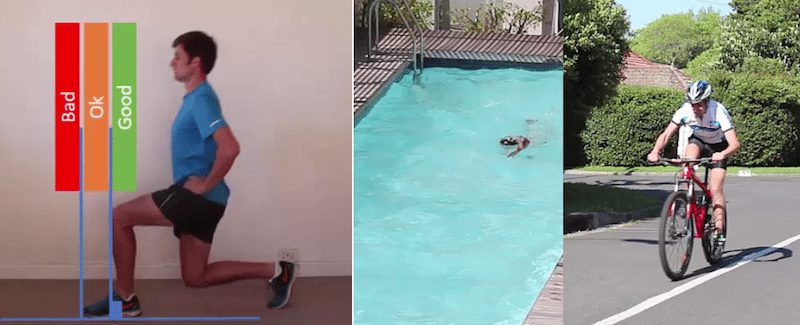Cross-Training
Episode #5 of the course “Ultimate Guide to Running” by Matthew Henshall
Many runners don’t want to let anything else in, so the idea of going for a swim, swinging by the gym, or sitting on a saddle doesn’t seem to make sense. Even if we are thinking about doing these other activities, we are not really sure how they will benefit us. Runners also don’t really know what to do at the gym to improve their running.
• Runners are known for having power and endurance, but they often have weaknesses such as poor flexibility or neglecting their upper bodies. For example, runners might have strong quads that overpower weaker hamstrings.
• Many of these weaknesses can lead to injuries.
• Cross-training, although great for strength and fitness, is also largely for injury prevention.
Cross-training can also have a compounding effect that can take you to the next level in your running. It also is a great way to rest muscles, listen to your body, and focus on specifics and form.
• It should account for up to 25% of your training time.
• It is not a supplement but rather an integral part.
Gym
Gym is one way for a runner’s body strength to catch up with his or her aerobic fitness. As mentioned before, when you start running, you battle to breathe but your legs are fine; as you pick up your training, breathing becomes easier and your muscle fatigue starts to take over as the limiting factor.
Try to add strength training into every day of the week—it only takes 5 minutes a day to do 20 push-ups and sit-ups slowly and carefully, focusing on breathing and form. It is common for people to go to the gym once a month and try to cram too much into it; this can often result in injuries.
At the gym, use your body weight as much as possible. Use low weights to do some arm curls and lunges. It can’t be said enough—focus on your core using light weights and high repetitions to build up your strength. Focus on push-ups, sit-ups, lunges, arm curls, and kettle bell swings.
Swimming and Cycling
Both swimming and cycling focus on cardiovascular fitness—that is to say, low intensity, building muscle endurance, and getting better at recovering while you have an elevated heart rate. Both forms of exercise can be high intensity, but they are generally recommended as a time to rest or cool the muscles and get blood moving through the body.
Another advantage is the fact that both sports have a low risk of injury. Swimming in particular increases your flexibility and upper body strength, while cycling increases your cadence and can benefit your aerobic fitness.
If you are getting tired muscles after a run, cool them off in the pool with a relaxed and slow swim. If you want to improve your breathing, do some interval training on a bicycle. To increase upper body strength, do more swimming.
Tasks
• Start spending 5 minutes a day working up a sweat standing in the same place (push-ups, sit-ups, or lunges).
• Understand what is limiting your running. Is it breathing, endurance, or strength? Figure out how you can focus on this in your training plan with cross-training.
Recommended book
“Quick Strength for Runners: 8 Weeks to a Better Runner’s Body” by Jeff Horowitz
Share with friends

